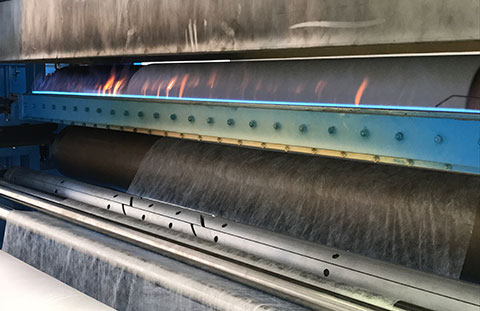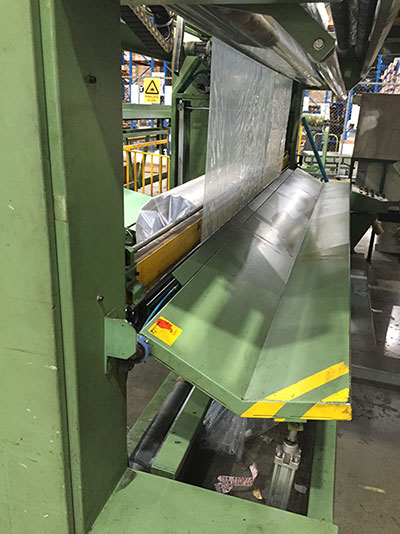State of the art machinery |
The widest laminating service in Australia |

State of the art machinery |
The widest laminating service in Australia |

Flame Lamination |
The low cost and eco-friendly option |
We offer flame laminating services as a low-cost and eco-friendly option for a range of industries.
We create single-sided, double-sided, or multilayer laminations measuring up to 25 mm in thickness.

Flame lamination involves passing a substrate (primarily polyurethane foam) through a controlled flame, changing the surface of the foam to a molten state. Another substrate (textile) is then brought into direct contact with the molten foam, under controlled tension and pressure (nip point). As the molten foam rapidly cools, a cohesive bond is formed at the interface between the foam and textile. There are many factors that control the amount of bond strength achieved between the foam and the substrate including the speed and distance at which the foam passes through the controlled flame.
One of the primary advantages of flame lamination is that no adhesive is needed. In addition to cost savings, avoiding the use of adhesives eliminates the risk of adhesive creep and bond failure, and the materials are easier to recycle. For some composites, a very thin layer of foam can be used as a bonding agent between two materials, taking advantage of the desirable characteristics of flame lamination, without adding any appreciable thickness.
Used most often in conjunction with open-cell polyurethane foams, including both polyester and polyether, flame laminating applies flawlessly to numerous soft goods applications, such as orthopedic padding, thermal insulation components, acoustic insulation products and automotive interior components.
At Australian Foam Laminators, we use flame lamination technology to bond foam to fabric, leather, canvas and various other textiles. Recent upgrades to our laminating machinery systems allow us to now flame bond textiles up to 2400mm wide, leading us to be widest flame laminating service available in Australia.
Our facilities house three flame laminating process technologies bonding flexible materials up to 2400mm in width in a roll to roll method, ensuring fast turn arounds whilst negating the possibility of company-wide breakdown. Process flexibility allows us to laminate the same or different materials to opposite sides of the foam creating double-sided lamination, where the foam is inserted between combinations of decorative or technical materials. Maxi rolls up to 2000 meters can also be processed using these latest technologies at Australian Foam Laminators.
Number of staff
Lamination thickness possible (mm)
Lamination width possible (mm)
Number of Workplace Accidents